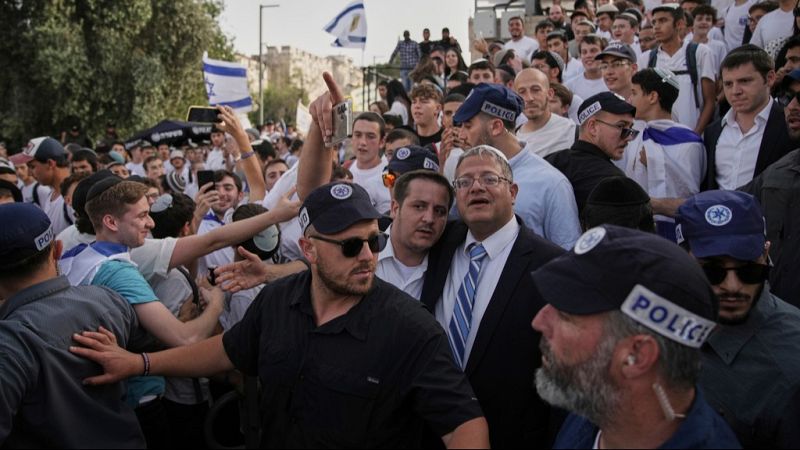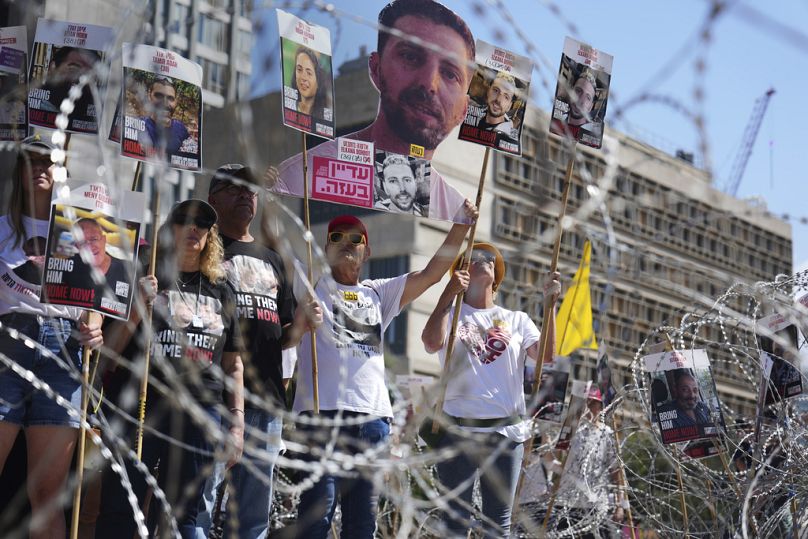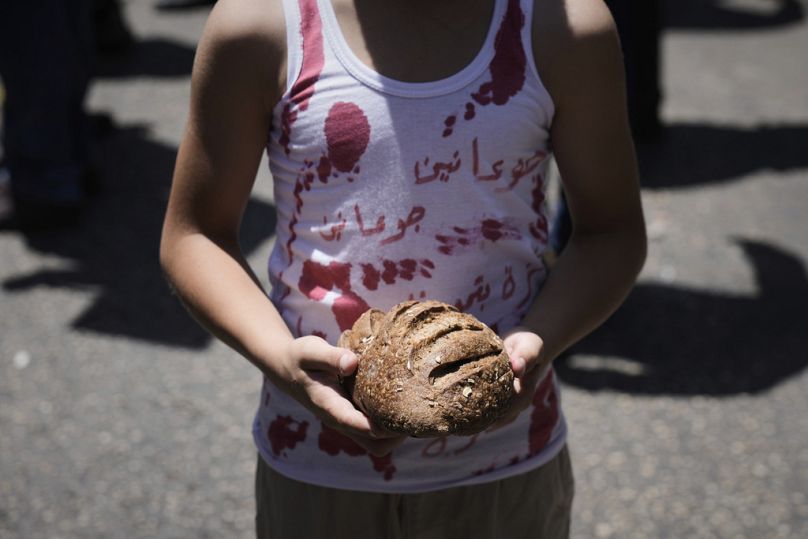Far-right Israeli minister Ben-Gvir’s al-Aqsa visit triggers backlash

Far-right Israeli National Security Minister Itamar Ben-Gvir visited and prayed at Jerusalem’s most sensitive holy site on Sunday, the al-Aqsa compound, triggering a wave of regional condemnation and sparking fears of further escalations in tensions.
The provocative move came as Israeli attacks across the Gaza Strip continue, with at least 33 Palestinians killed on Sunday en route to aid distribution points, as global criticisms mount over Israel's manufacturing of famine-like conditions in the besieged enclave.
Ben-Gvir’s visit to the hillside compound threatens to further set back efforts by international mediators, such as Qatar and Egypt, to bring an end to Israel’s almost two-year military offensive on Gaza.
The area is the holiest site in Judaism called the Temple Mount and is believed to be home to ancient temples. Muslims call the site the Noble Sanctuary, which today is home to the Al-Aqsa Mosque, Islam’s third-holiest site.
Visits to the site, the first Islamic Qibla – the direction Muslims across the world pray towards – by Israeli officials are considered a provocation across the Arab world. Openly praying on the premises violates a longstanding status quo.
Jewish faithful have been allowed to visit and tour the holy compound, but are barred from praying there, with Israeli troops and police meant to ensure that as they protect the premises. Israeli Prime Minister Benjamin Netanyahu’s office says Israel would not change the norms governing the site following Ben-Gvir’s visit.
The far-right minister visited the site following Hamas’ release of videos showing an Israeli hostage in Gaza appearing thin and weak. The video sparked an uproar in Israel and piled pressure on Netanyahu’s government to strike a deal to bring back the remaining hostages.
Some 50 hostages are still under Hamas captivity in Gaza, 20 of whom are still believed to be alive. They were taken after Hamas staged an attack on southern Israel on 7 October 2023, killing 1,200 people.
Israel’s mission to the UN said it requested an emergency meeting of the UN Security Council on the hostages, which will take place on Tuesday.
“They do not want a deal,” Netanyahu said of Hamas. “They want to break us using these videos of horror.”
His office said it spoke with the Red Cross to seek help in providing the hostages with food and medical care. The International Committee of the Red Cross said it was “appalled by the harrowing videos” and called for access to the hostages.
Hamas' military wing said it was ready to respond positively to Red Cross requests to deliver food to hostages, if humanitarian corridors are opened in a “regular and permanent manner” in Gaza.
Ben-Gvir called for Israel to formally annex the Gaza Strip and renewed his desire for a Palestinian expulsion from the territory, with it reviving rhetoric that has complicated hostage deal and ceasefire negotiations.
He said the video showing 24-year-old Evyatar David in a dimly lit tunnel is an attempt to pressure Israel and increase global criticism against it to strike a deal, which he opposed, instead endorsing further attacks on Gaza.
His visit was condemned as a provocation by Palestinian leaders, as well as Jordan, who serve as custodians of the al-Aqsa Mosque, Saudi Arabia and Turkey. Houthi rebels in Yemen fired three drones at Israel shortly after, which Israel said were intercepted.
Ben-Gvir’s previous visits to the holy site caused an eruption in violence in and around the site, fuelling an 11-day war with Hamas in 2021.
Violence continues around Gaza food distribution points
Hospital officials in Gaza say Israeli forces killed 33 Palestinians on Sunday en route to aid distribution hubs. Eyewitnesses say Israeli soldiers opened fire as hungry crowds surged towards the aid sites.
Witness Yousef Abed described coming under indiscriminate fire and seeing at least three people bleeding on the ground. “I couldn’t stop and help them because of the bullets,” he said.
Two hospitals in southern and central Gaza said they received bodies from routes leading to the Israeli-backed US company, Gaza Humanitarian Foundation’s (GHF) aid sites, including 11 killed in the Teina area while trying to reach the hub in Khan Younis.
Three Palestinian eyewitnesses, including one travelling through Teina, said they saw soldiers open fire on the routes, which are in military zones.
Israel's military said it was not aware of casualties as a result of its gunfire near aid sites. GHF’s media office said there was no gunfire “near or at our sites.”
The United Nations says 859 people were killed near GHF sites from 27 May to 31 July, and hundreds of others have been killed along the routes of UN-led food convoys.
GHF says its armed contractors have only used pepper spray or fired warning shots to prevent deadly crowding. The IDF said it only fires warning shots. Both claim the death tolls have been exaggerated.
Gaza’s Hamas-run Health Ministry says 93 children and 82 adults have died so far from malnutrition-related causes.
The UN says 500-600 aid trucks are needed daily to satisfy the needs of Gaza’s two million population, only a fraction of that enters the enclave in what it described as a man-made humanitarian catastrophe.
Malnutrition-related deaths are not included in the ministry’s war casualty count.
The ministry says the death toll from Israeli attacks across Gaza is now nearing 61,000. Their figures do not distinguish between civilian and combatant casualties.
Today



